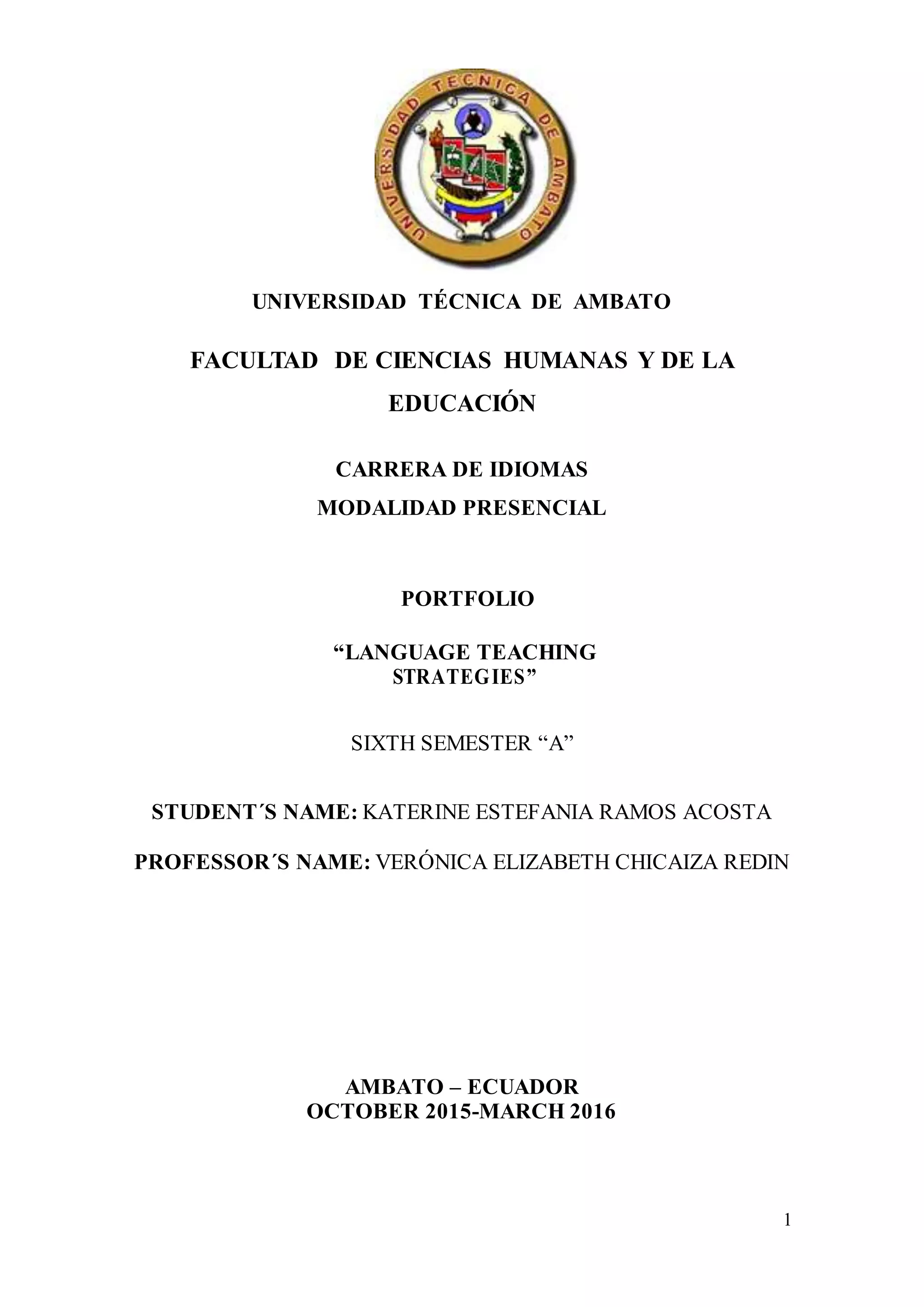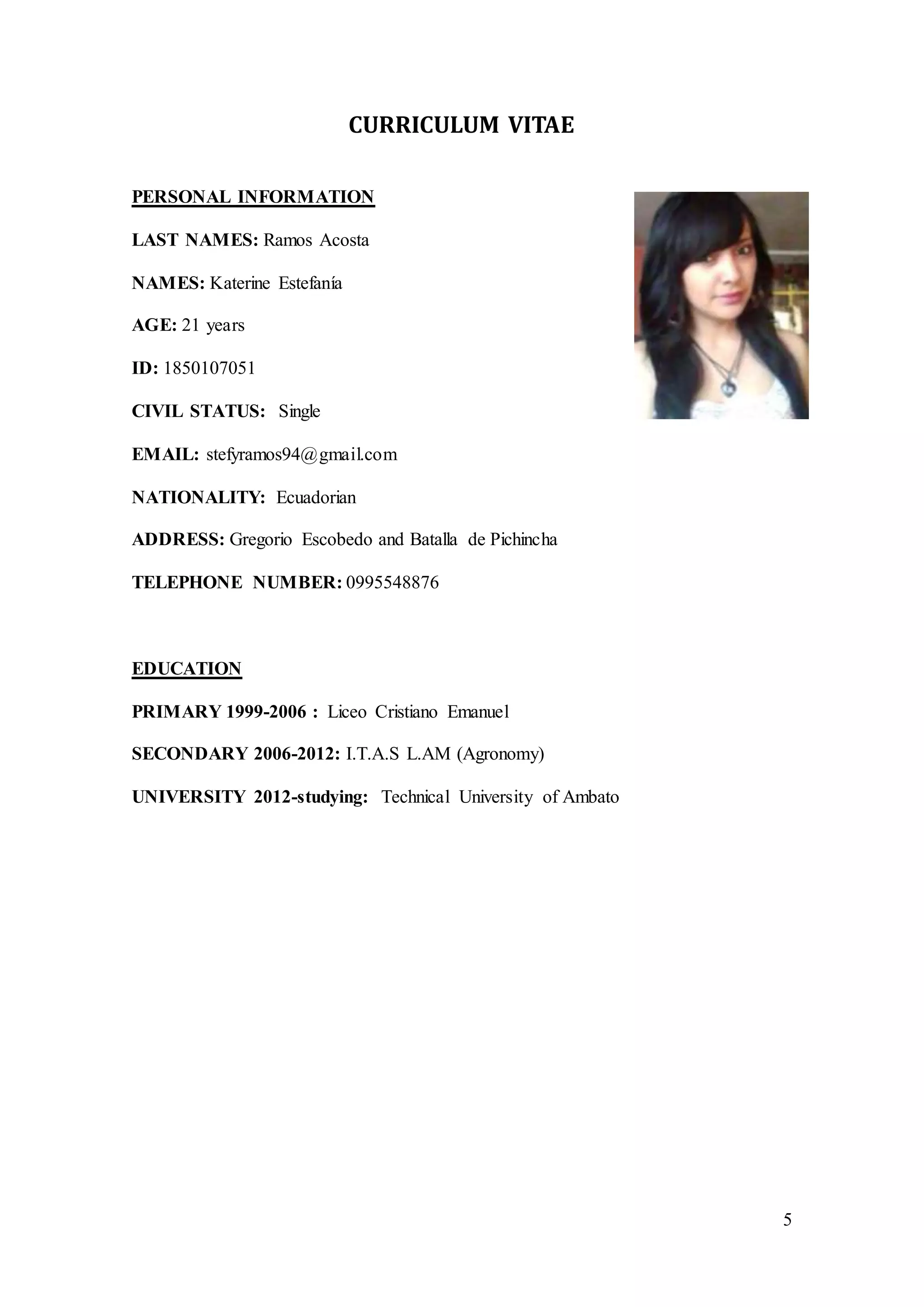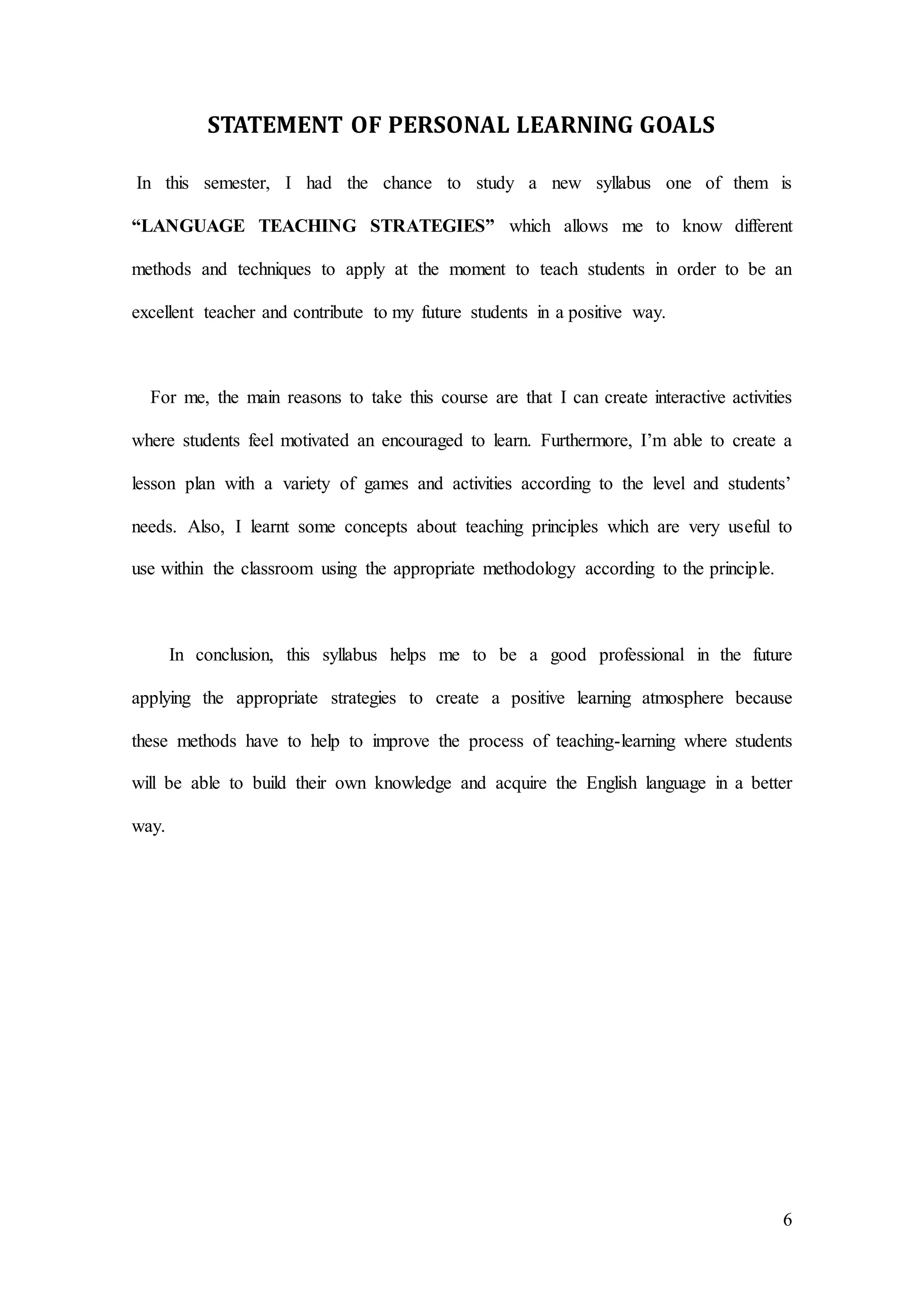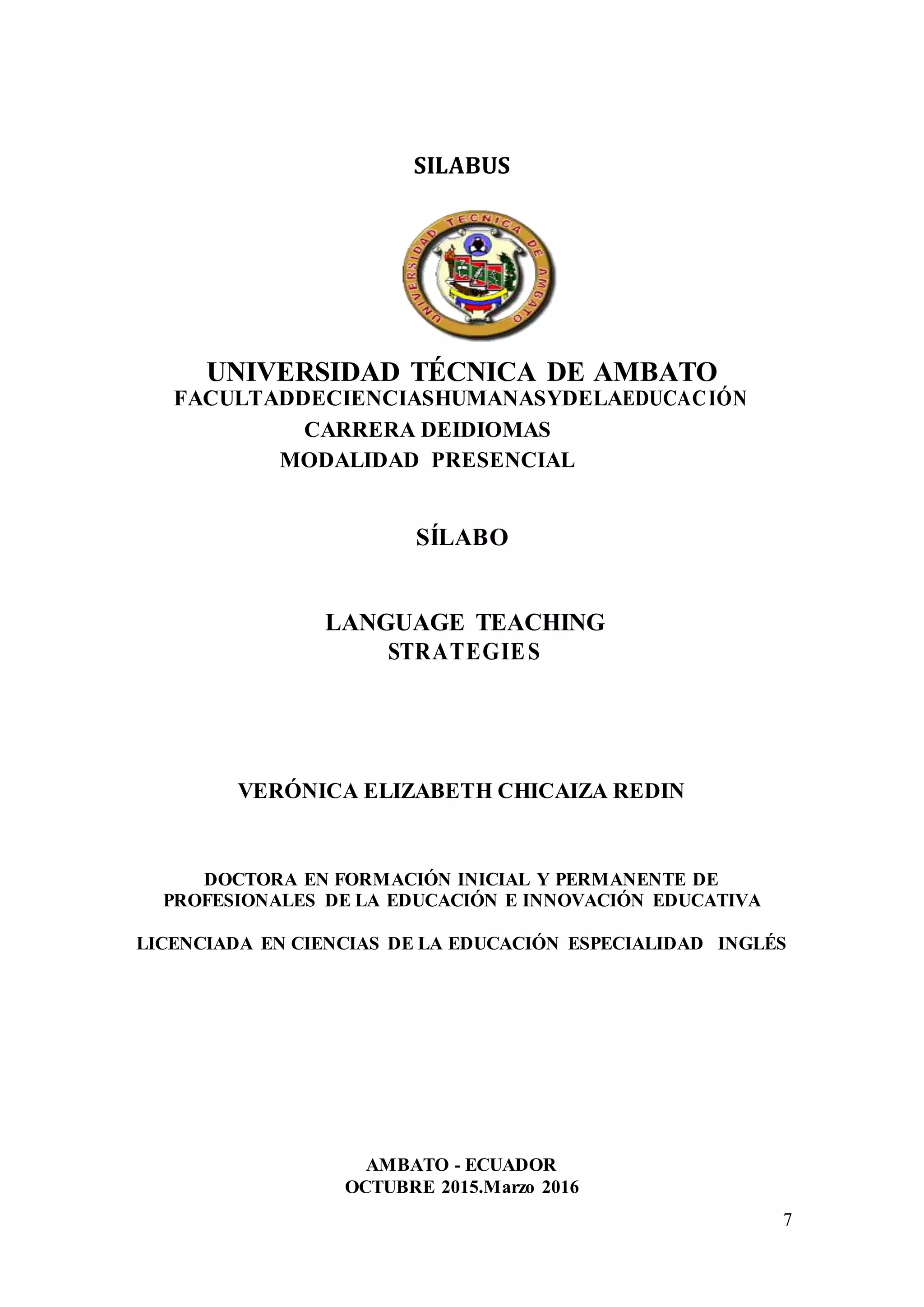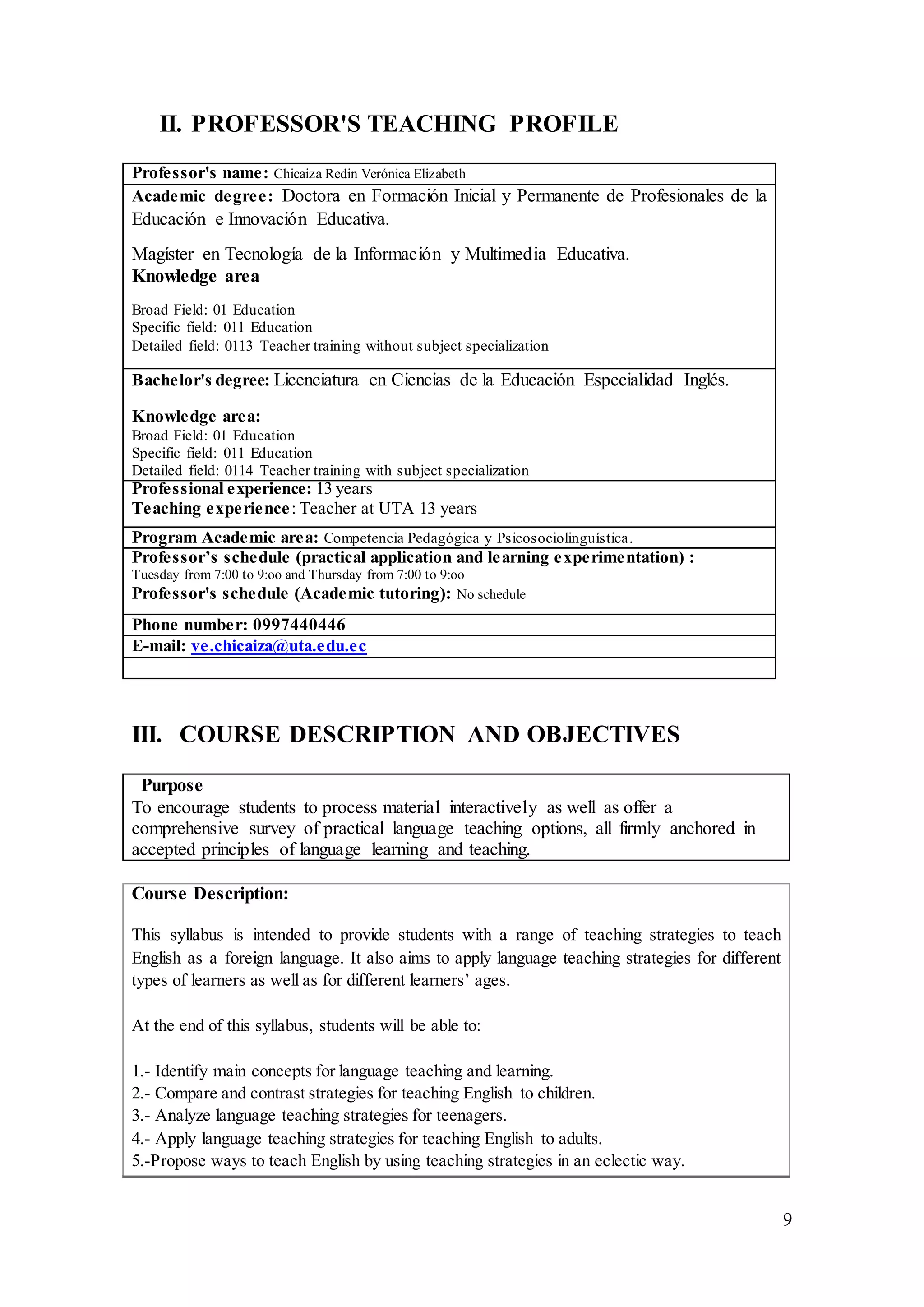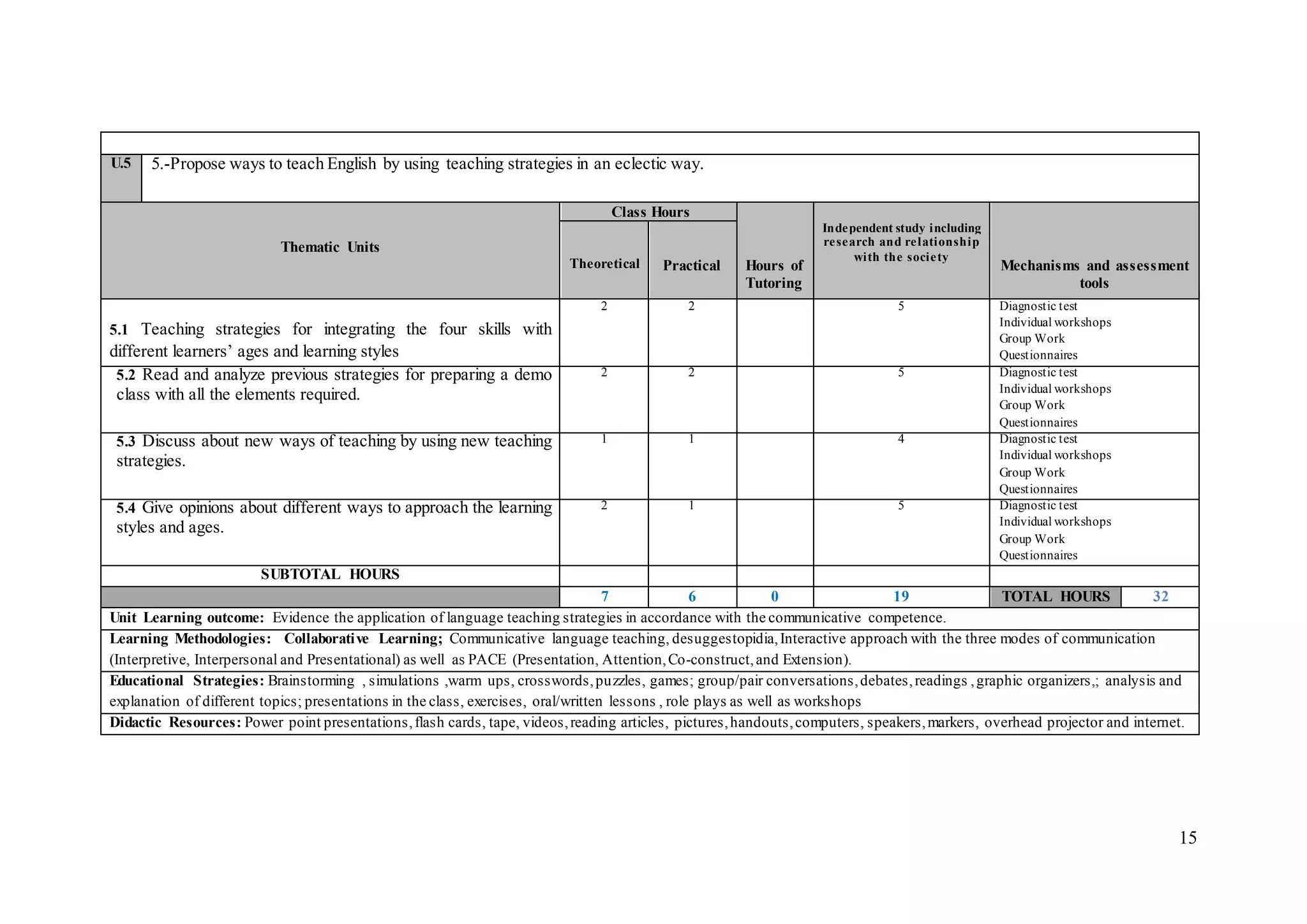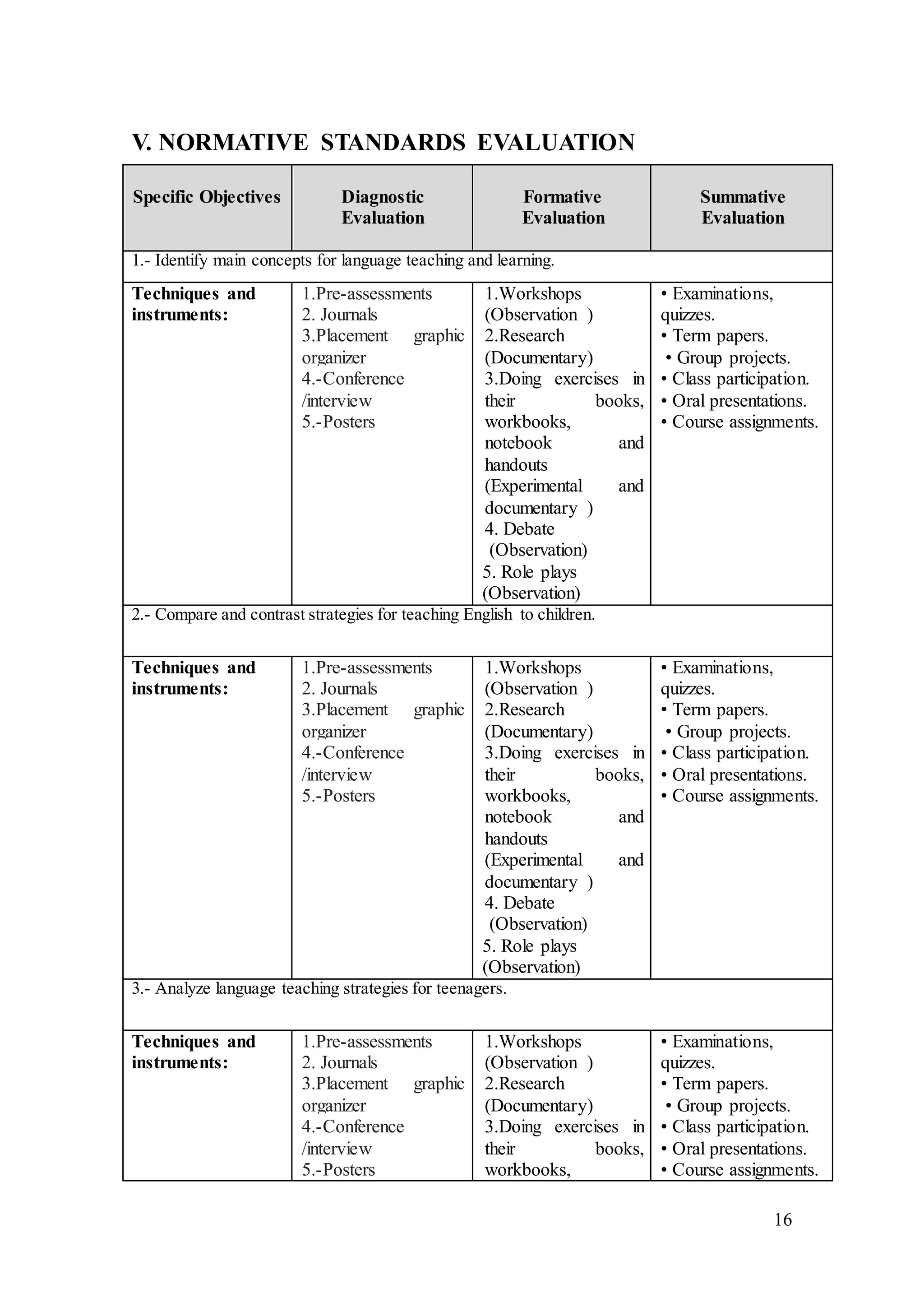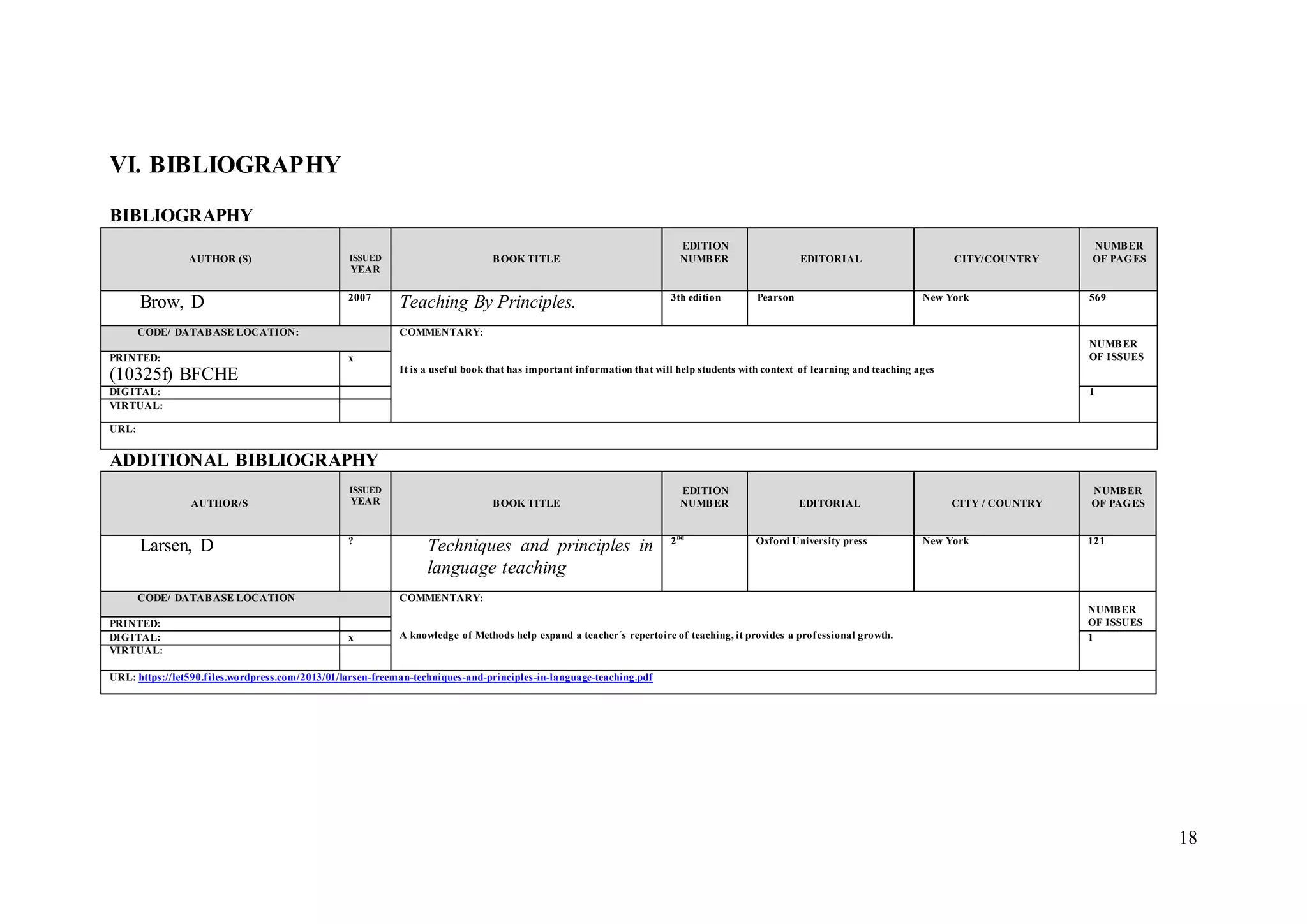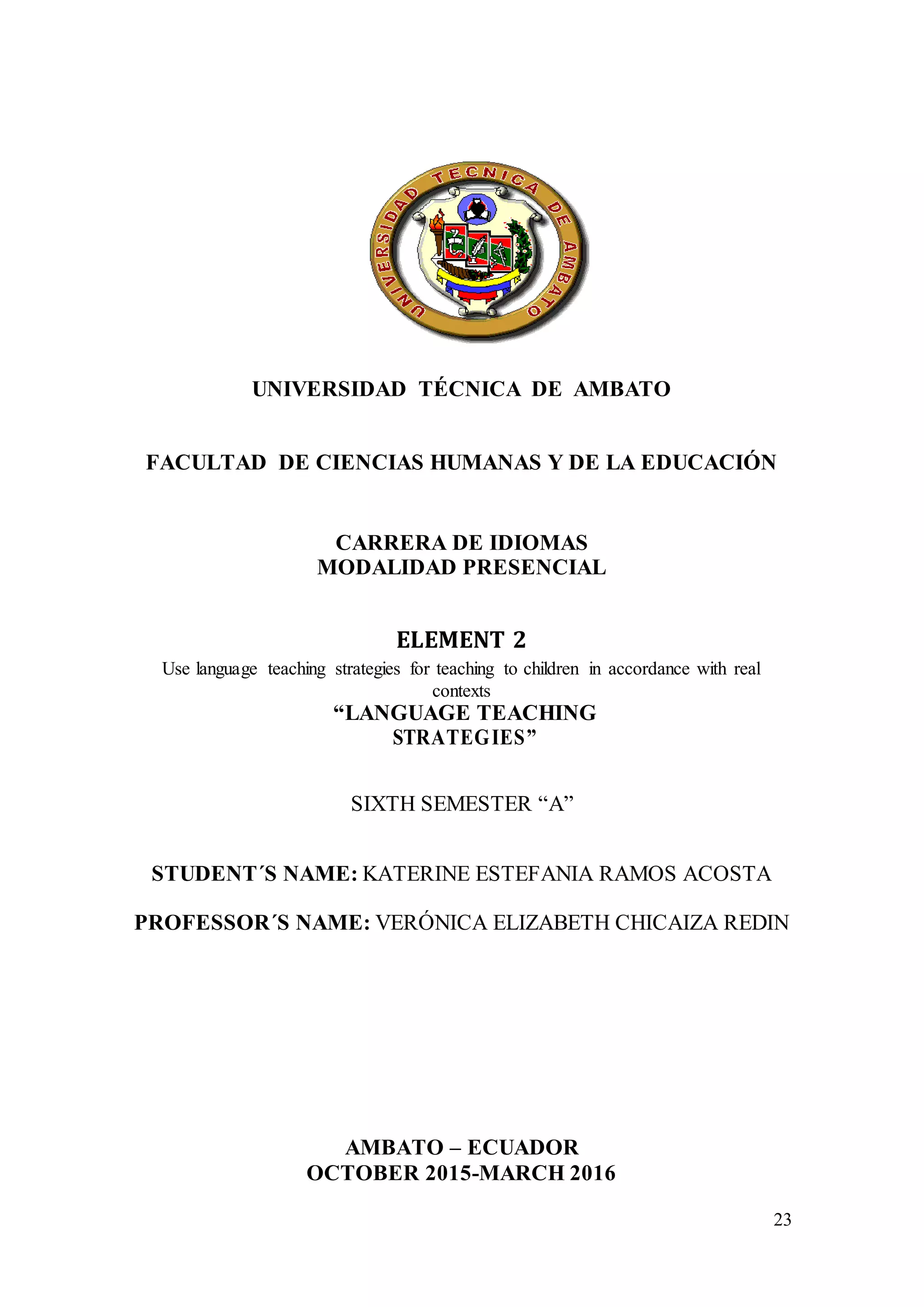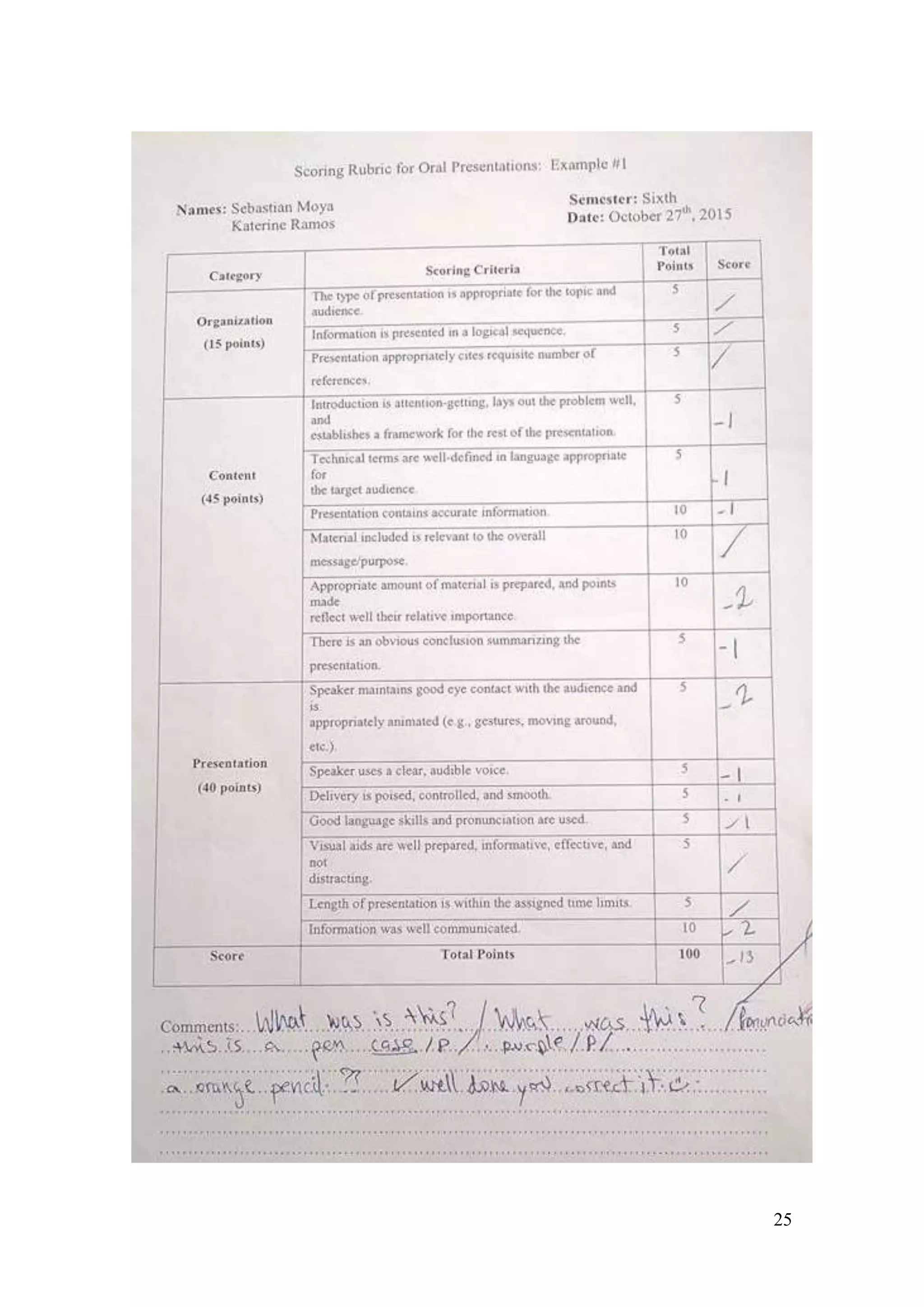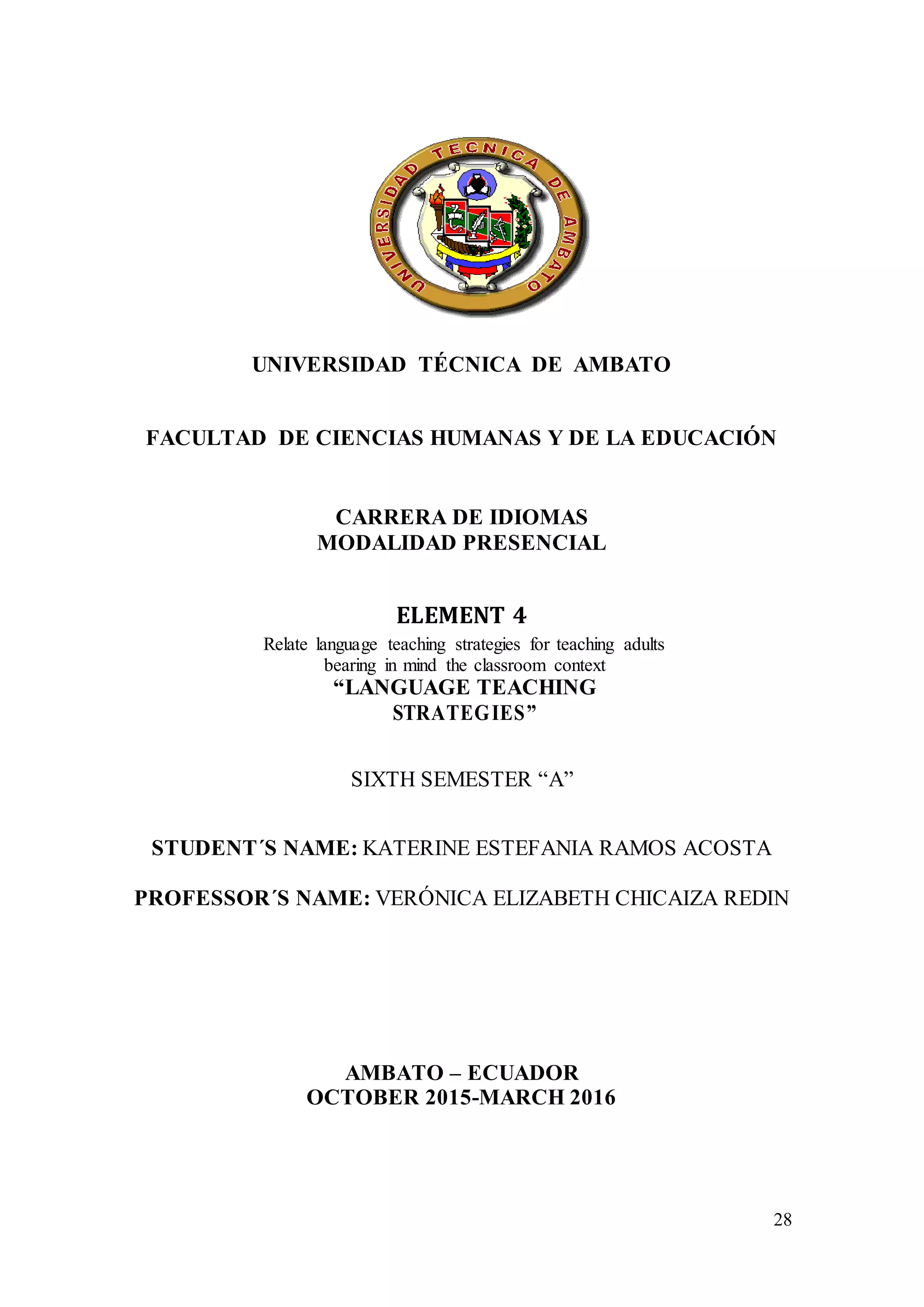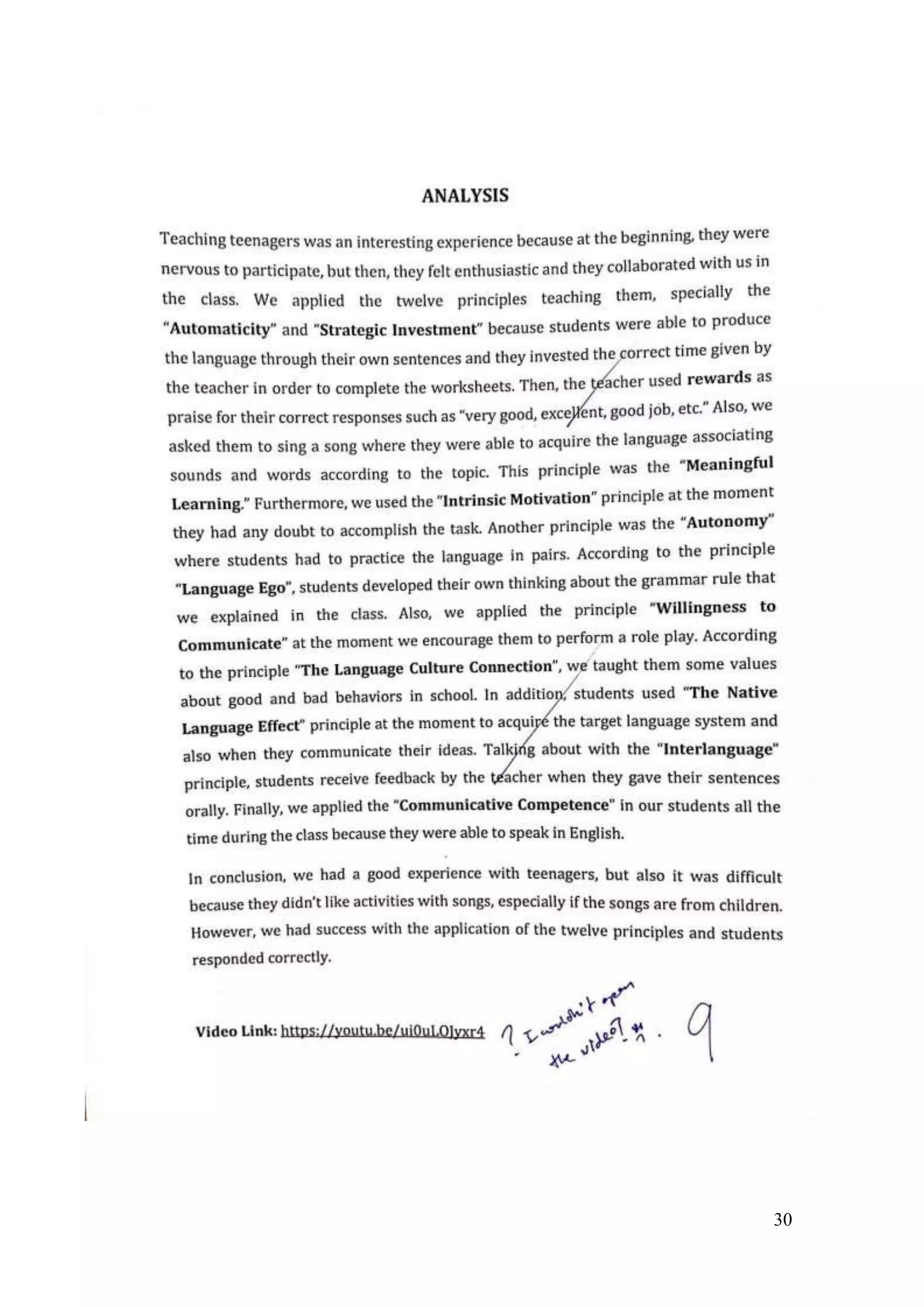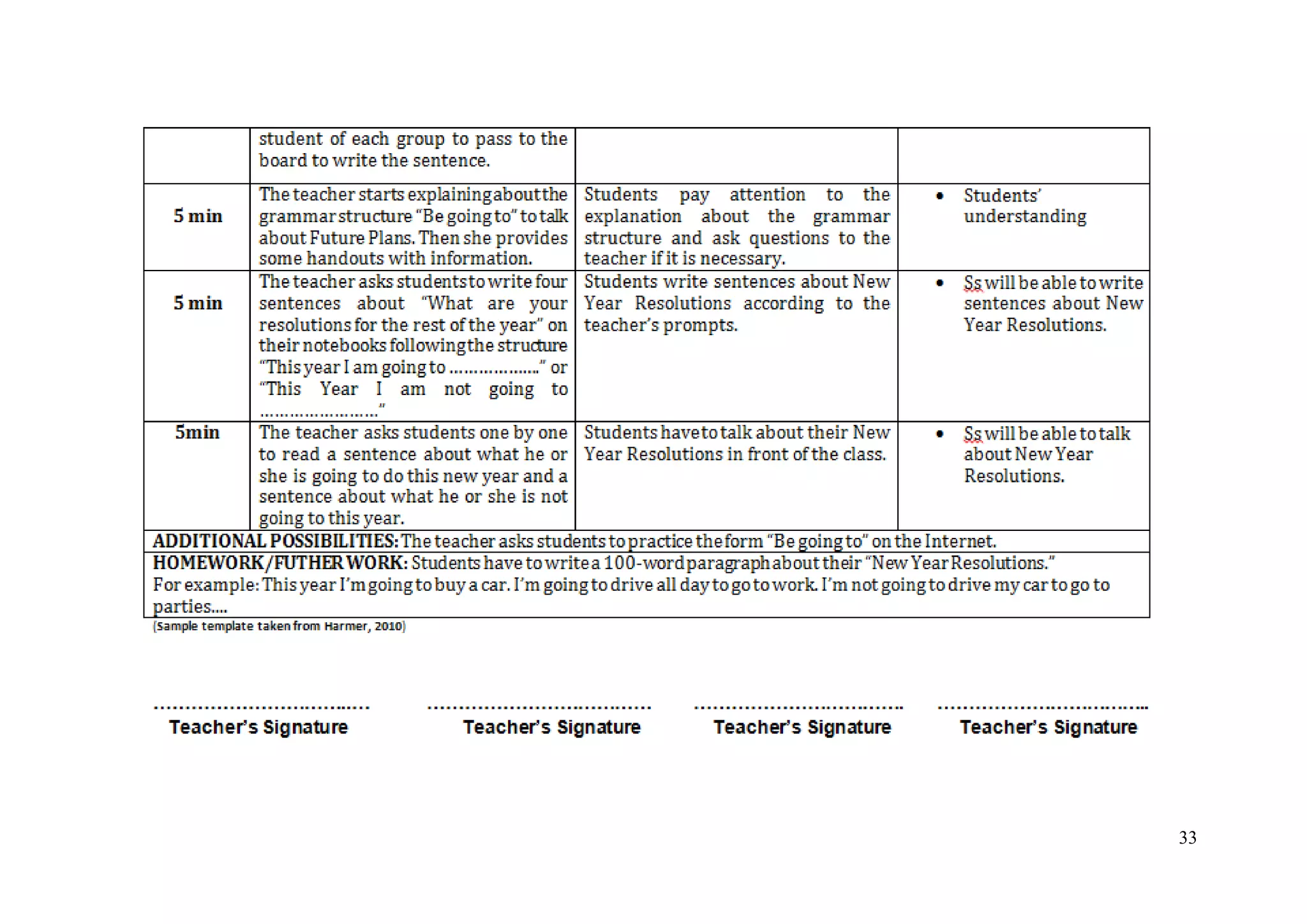This document contains a syllabus for a "Language Teaching Strategies" course. The syllabus provides information on the course objectives, which are to develop students' pedagogical competence and ability to internalize major and minor teaching methods for English. Specific objectives include identifying concepts for language teaching/learning, comparing strategies for teaching English to different ages/levels, and applying strategies in an eclectic way. The methodology uses Kolb's strategies and approaches like ABP, ABPro. The course aims to equip students with a range of teaching strategies and apply them depending on learners' levels and environments.
